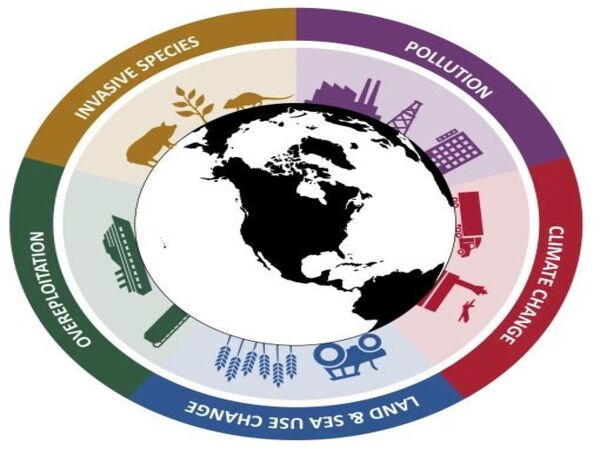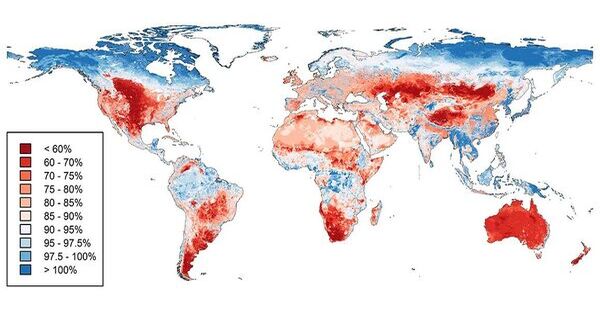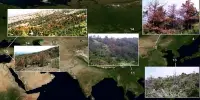According to a massive multi-model study published in Science, land-use change alone has caused a 2% to 11% decrease in global biodiversity throughout the twentieth century. According to projections, climate change might become the primary driver of biodiversity decrease by the mid-21st century.
The analysis, conducted by the German Centre for Integrative Biodiversity Research (iDiv) and Martin Luther University Halle-Wittenberg (MLU), is the largest modeling study of its kind to date. The researchers tested thirteen models for estimating the influence of land-use and climate change on four different biodiversity measures as well as nine ecosystem services.
By including all world regions in our model, we were able to fill many blind spots and address criticism of other approaches working with fragmented and potentially biased data. Every approach has its ups and downsides.
Prof Henrique Pereira
GLOBAL BIODIVERSITY MAY HAVE DECLINED BY 2% TO 11% DUE TO LAND-USE CHANGE ALONE
According to the Intergovernmental Platform on Biodiversity and Ecosystem Services (IPBES), land-use change is the leading cause of biodiversity change. However, experts are divided on how much biodiversity has altered in recent decades. To further answer this question, the researchers simulated the effects of land-use change on biodiversity across the twentieth century. They discovered that global biodiversity may have decreased by 2% to 11% owing to land-use change alone. This range includes four biodiversity metrics1, computed by seven distinct models.
“By including all world regions in our model, we were able to fill many blind spots and address criticism of other approaches working with fragmented and potentially biased data,” says first author Prof Henrique Pereira, research group head at iDiv and MLU. “Every approach has its ups and downsides. We believe our modelling approach provides the most comprehensive estimate of biodiversity trends worldwide.”

MIXED TRENDS FOR ECOSYSTEM SERVICES
Using another set of five models, the researchers also calculated the simultaneous impact of land-use change on so-called ecosystem services, i.e., the benefits nature provides to humans. In the past century, they found a massive increase in provisioning ecosystem services, like food and timber production. By contrast, regulating ecosystem services, like pollination, nitrogen retention, or carbon sequestration, moderately declined.
CLIMATE AND LAND-USE CHANGE COMBINED MIGHT LEAD TO BIODIVERSITY LOSS IN ALL WORLD REGIONS
The researchers also examined how biodiversity and ecosystem services might evolve in the future. For these projections, they added climate change as a growing driver of biodiversity change to their calculations.
Climate change stands to put additional strain on biodiversity and ecosystem services, according to the findings. While land-use change remains relevant, climate change could become the most important driver of biodiversity loss by mid-century. The researchers assessed three widely-used scenarios — from a sustainable development to a high emissions scenario. For all scenarios, the impacts of land-use change and climate change combined result in biodiversity loss in all world regions.
While the overall downward trend is consistent, there are considerable variations across world regions, models, and scenarios.
PROJECTIONS ARE NOT PREDICTIONS
“The purpose of long-term scenarios is not to predict what will happen,” says co-author Dr. Inês Martins of the University of York. “Rather, it is to understand alternatives in order to avoid potentially undesirable trajectories and instead select those with beneficial consequences. Trajectories are determined by the policies we pick, which are made on a daily basis. Martins, an iDiv and MLU alumna, co-led the model analysis.
The authors also point out that even the most sustainable scenario considered does not implement all of the measures that may be put in place to safeguard biodiversity in the coming decades. For example, bioenergy deployment, a fundamental component of the sustainability scenario, can help to mitigate climate change while also reducing species habitats.
MODELS HELP IDENTIFY EFFECTIVE POLICIES
According to the researchers, assessing the impacts of particular policies on biodiversity helps identify which policies are most effective in protecting and increasing biodiversity and ecosystem services. “There are modelling uncertainties, for sure,” Pereira adds. “However, our findings clearly demonstrate that present policies are insufficient to achieve international biodiversity goals. We need reinvigorated efforts to make headway on one of the world’s most pressing issues, human-caused biodiversity change.”
















